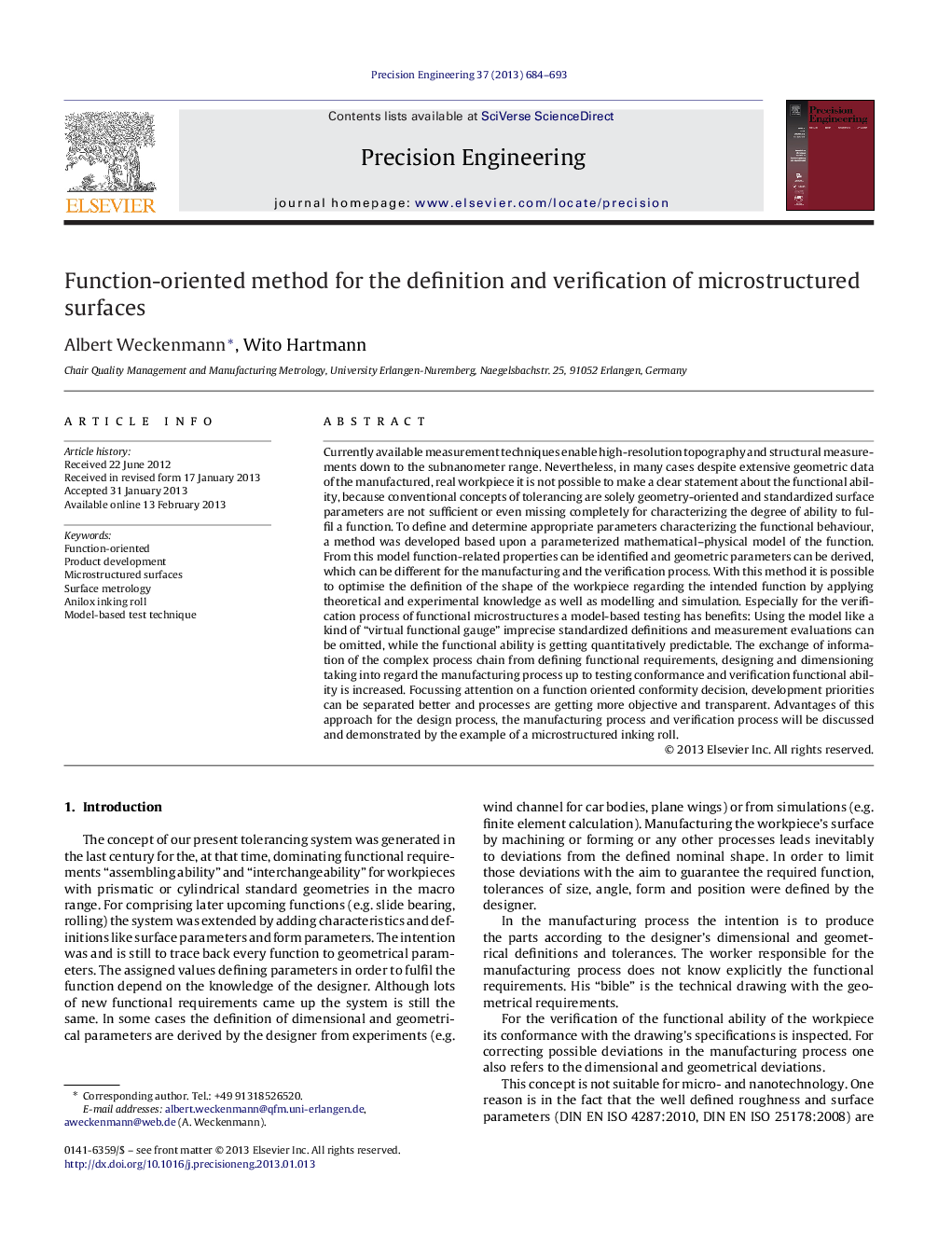| Article ID | Journal | Published Year | Pages | File Type |
|---|---|---|---|---|
| 803946 | Precision Engineering | 2013 | 10 Pages |
Currently available measurement techniques enable high-resolution topography and structural measurements down to the subnanometer range. Nevertheless, in many cases despite extensive geometric data of the manufactured, real workpiece it is not possible to make a clear statement about the functional ability, because conventional concepts of tolerancing are solely geometry-oriented and standardized surface parameters are not sufficient or even missing completely for characterizing the degree of ability to fulfil a function. To define and determine appropriate parameters characterizing the functional behaviour, a method was developed based upon a parameterized mathematical–physical model of the function. From this model function-related properties can be identified and geometric parameters can be derived, which can be different for the manufacturing and the verification process. With this method it is possible to optimise the definition of the shape of the workpiece regarding the intended function by applying theoretical and experimental knowledge as well as modelling and simulation. Especially for the verification process of functional microstructures a model-based testing has benefits: Using the model like a kind of “virtual functional gauge” imprecise standardized definitions and measurement evaluations can be omitted, while the functional ability is getting quantitatively predictable. The exchange of information of the complex process chain from defining functional requirements, designing and dimensioning taking into regard the manufacturing process up to testing conformance and verification functional ability is increased. Focussing attention on a function oriented conformity decision, development priorities can be separated better and processes are getting more objective and transparent. Advantages of this approach for the design process, the manufacturing process and verification process will be discussed and demonstrated by the example of a microstructured inking roll.
Graphical abstractFigure optionsDownload full-size imageDownload as PowerPoint slideHighlights► Modelling the function of microstructured workpieces as base for defining the optimal micro topography. ► Simulating functional behaviour to derive geometrical parameters for the design, manufacturing and verification process (parameters are usually different for each area). ► Method for an efficient process chain from function definition to verification of microstructured surfaces. ► Reduction of design uncertainties and measurement uncertainties though a model-based verification. ► Function-oriented evaluation of microstructures using the example of a microstructured inking roll.
